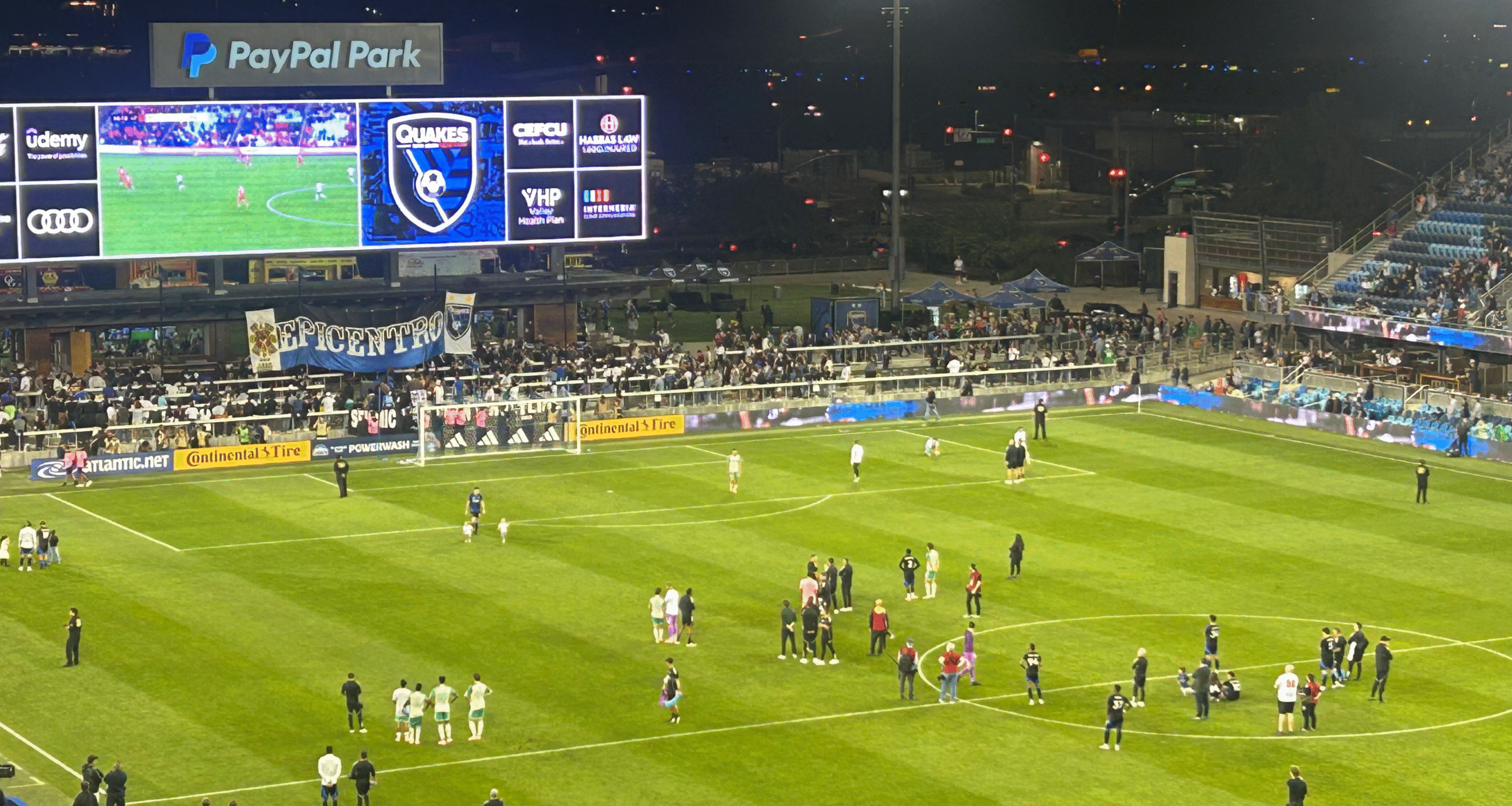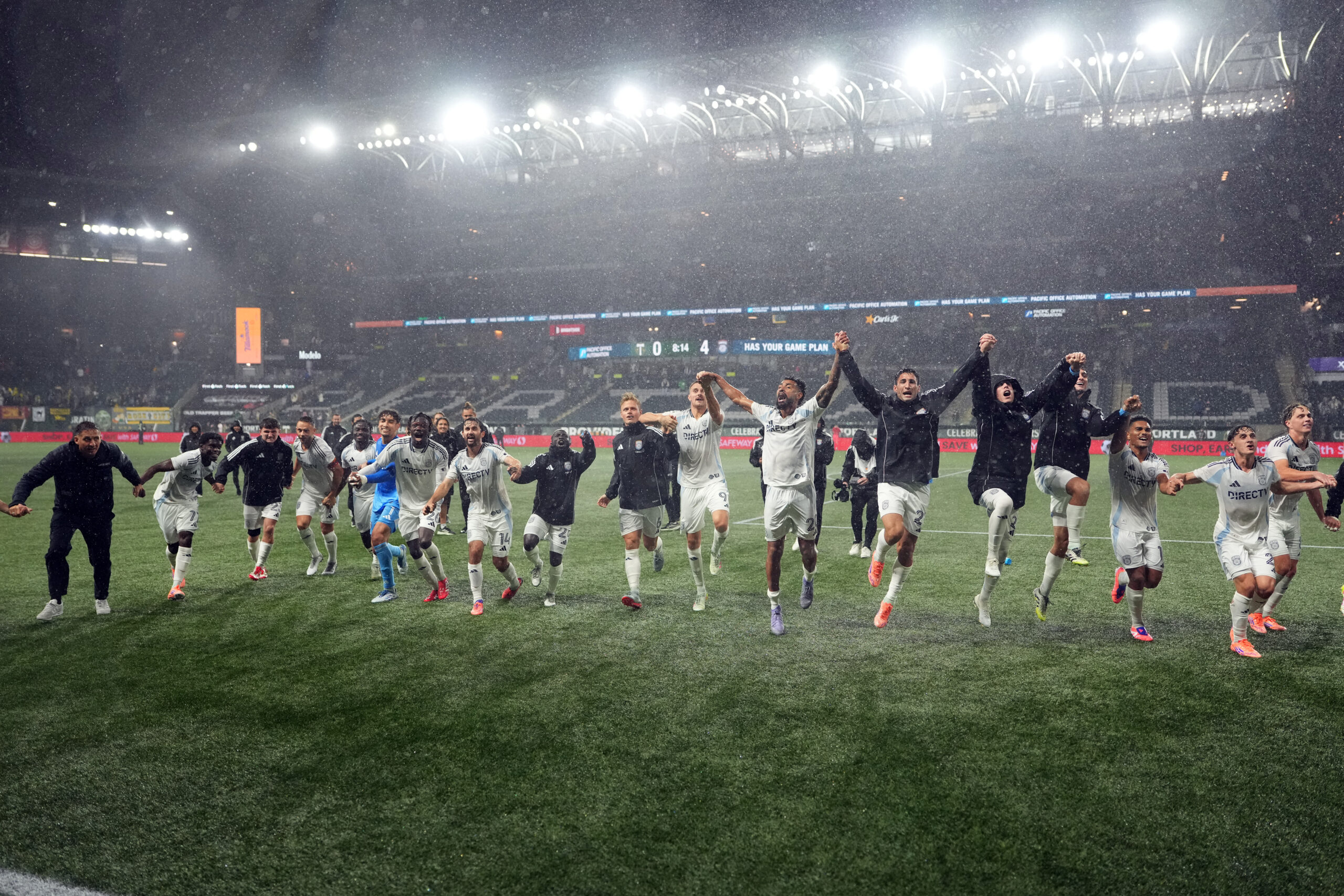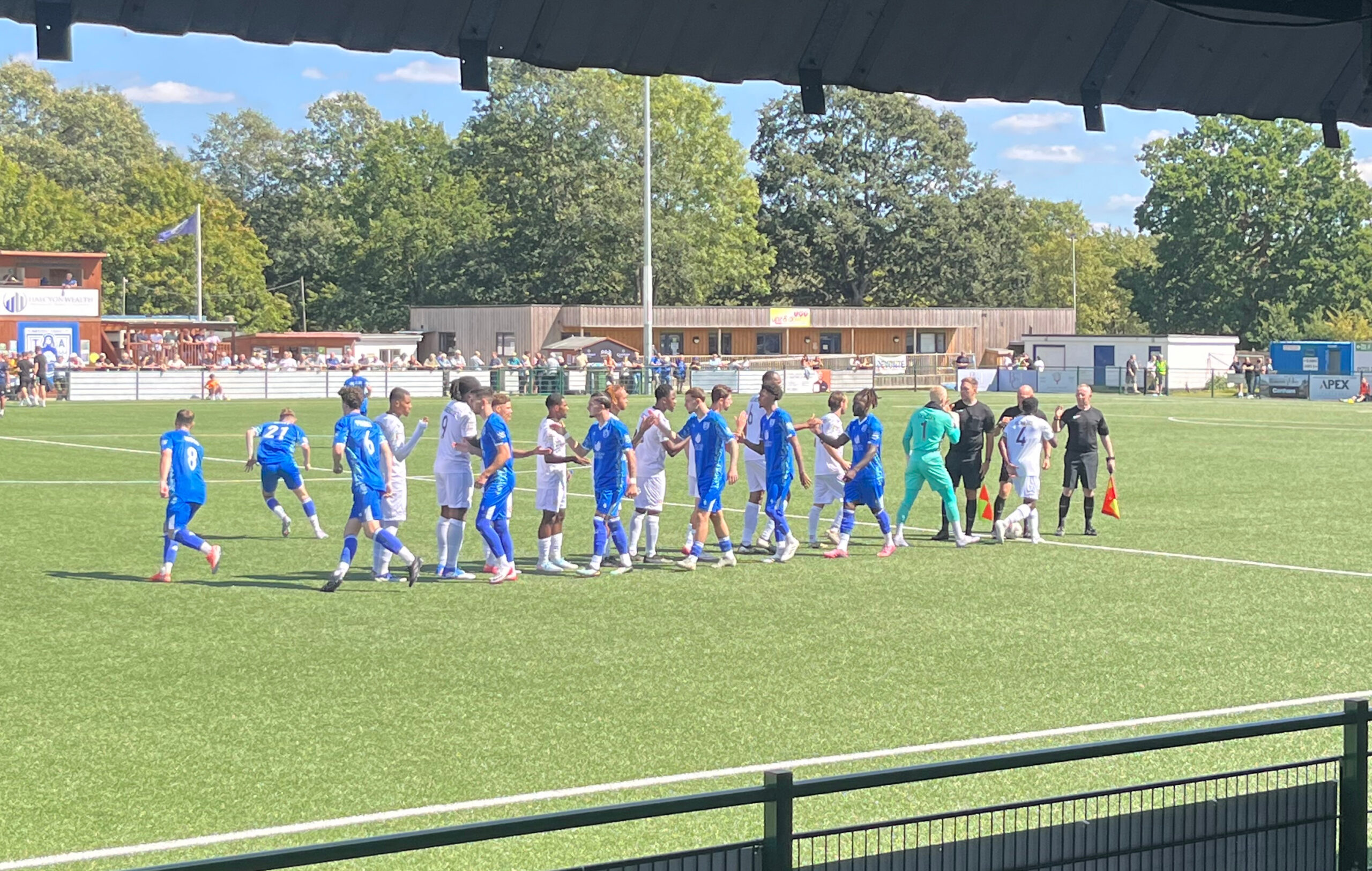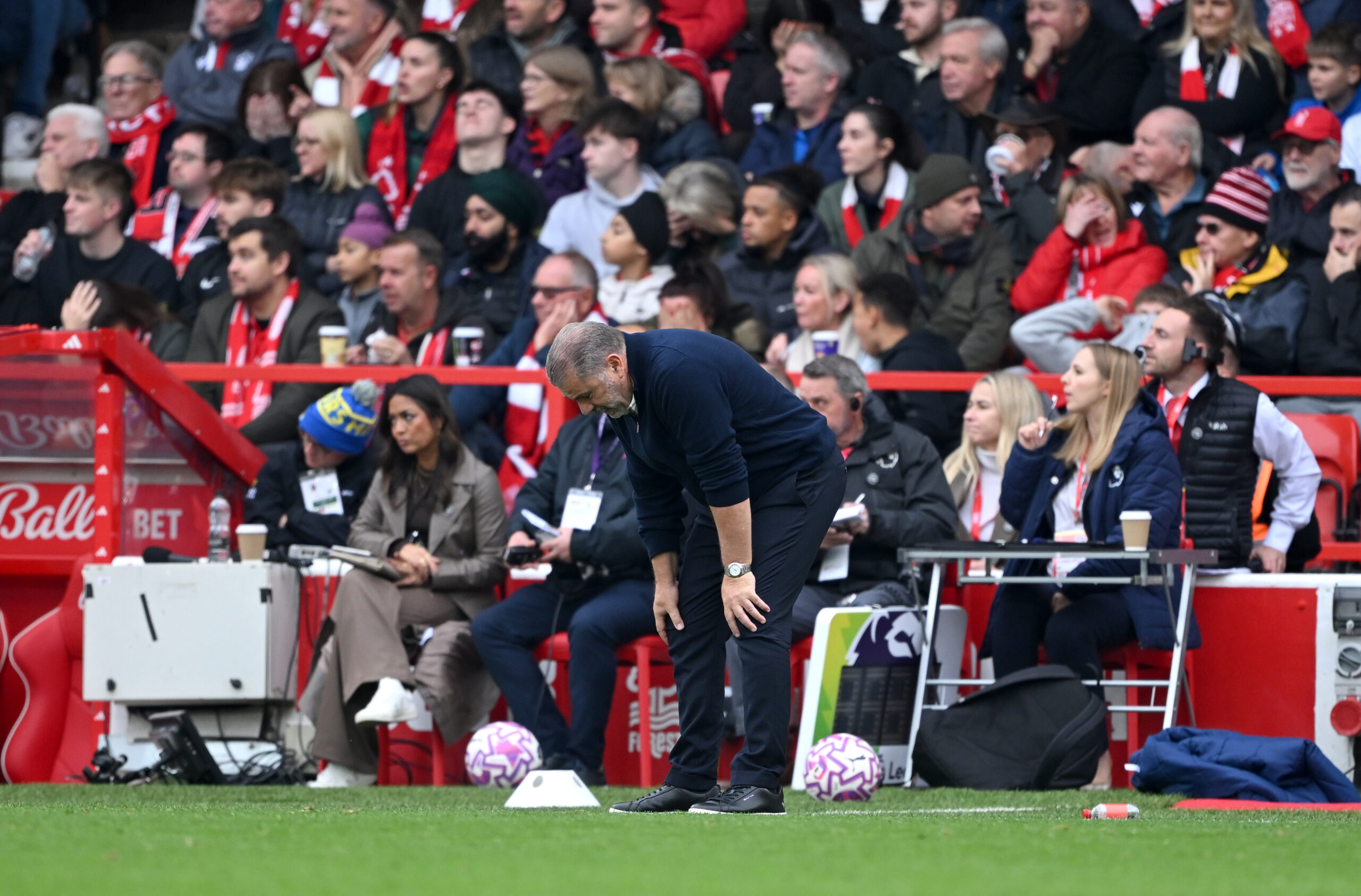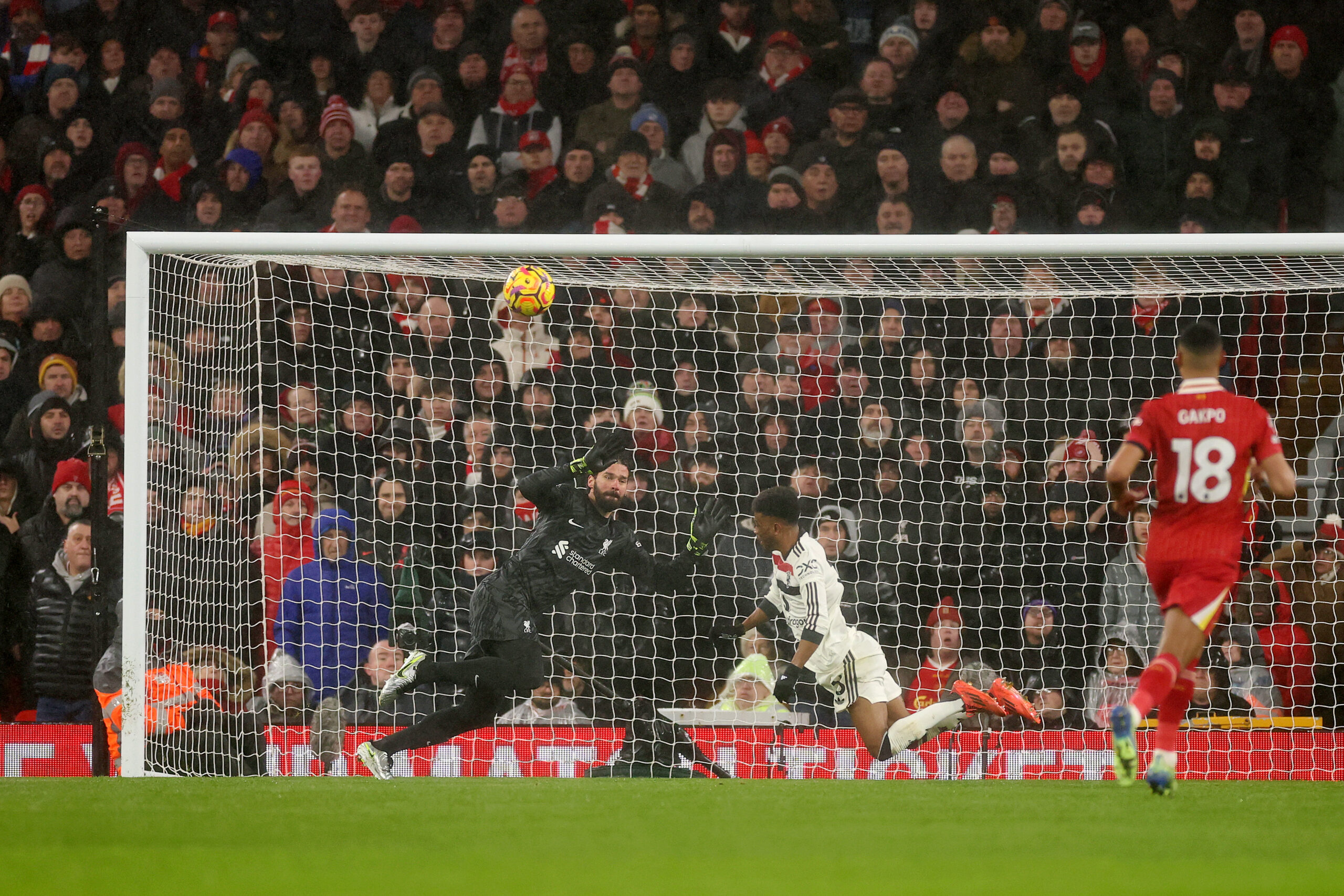It had the familiar trappings of a San Jose Earthquakes game. Jet liners landing in next-door Mineta airport, Crazy George and his drum rallying the crowd, C-level celebrities grinding the siren. But Saturday night had a different air, a crackling energy. It was Decision Day.
Win and In… Maybe
The final game of the MLS season coordinates all kick-offs in the two conferences to eliminate any hint of match-fixing and other improprieties. For the San Jose Earthquakes, who entered this match in 11th place, a playoff spot was still within reach. The media department of the Quakes made sure every journo knew exactly what was needed by printing the requirements on their seat placard. Very thorough and thoughtful.

The Quakes needed to beat Austin FC. The visitor’s 6th seed was already secured regardless of the game’s outcome, but they wouldn’t roll over. Additionally, they needed help from two of the three teams above them. Specifically: a FC Dallas loss to Vancouver (likely), a Real Salt Lake loss to St. Louis (50/50), a Colorado loss/tie to LAFC (likely).
First Half – That Old Familiar Feeling
It was a lively crowd of 17,033 folks who whooped and hollered as the Quakes took off on the front foot. Austin seemed uninterested in mounting any sort of coherent counter-attack or building from the back. All their goal kicks were long, and their defense stayed low and compact. The first real chance for San Jose came in the 12th minute when Christan Espinoza’s cross was met by Josef Martínez. His header was parried by Brad Stuver and Ousseni Bouda’s follow-up shot blocked off the line.
The mood in the press area then took a decidedly downward trajectory. Vancouver’s Mathías Laborda drew a DOGSO red in the 13th minute, reducing them to ten. Real Salt Lake then scored to take a 1 – 0 lead over St. Louis. Adding insult to injury, Austin then mounted their first counter-attack. In the 22nd minute, Owen Wolff’s effort from 30 yards out deflected off Daniel Munie’s back and into the net. Austin has the lead from their first shot. Things were looking grim.
To San Jose’s credit, they responded and dominated the first half. It was highly frustrating and more than a little unfair that they entered the locker room down a goal after logging 65% possession, 11 shots (3 on target) and 8 corners. The only stats Austin led were saves (3) and clearances (3).
I will point out that the Quakes did put the ball in the net. Cristian Arango took one of Stuver’s drop-kicks off his back and the ball crossed the line. But the referee had correctly blown the play dead since Arango moved to block the kick, which is not allowed.
Second Half – Doing Their Part
There was a somber aura as the second half started. RSL held a 2 – 1 lead over St. Louis, Vancouver held a 1 – 1 draw with Dallas, but were a man down. Despite LAFC’s 1 – 0 lead over Colorado, many folks exhibited a resigned attitude. And the play after the whistle did nothing to allay those concerns. San Jose had five shots within the first 15 minutes, all denied. Particularly galling was a lovely shot from Benjamin Kikanović who struck the inside post, the resulting carrom bouncing along the goal line and out for a goal kick. It defied physics.
By the 70th minute I had this in my notes: “Quakes are running out of time. And the other games aren’t going according to plan either.” Dallas were 2 – 1 up, Colorado level at 1 – 1, RSL still led 2 – 1.
This is where I’ll give Bruce Arena some credit. He knew the score and made some changes on the pitch, removing the left side of Jamar Ricketts and Bouda and putting fresh legs with Jack Skahan and 20-year old Niko Tsakiris. That would prove vital.
It started with Jack Skahan barely one minute after he touched grass. He delivered a gem of a cross that found Martínez in the box, and the diminutive forward’s header hit the net.
Three minutes later the Quakes had a free kick on the right side, just above the box. Espinosa and Tsakiris stood over it. In the post-game interview, the young midfielder explained how Espinosa told him to take the shot. Only days before, in Chile playing for the USMNT U-20s, he struck a goal from a similar position. Once again, Tsakiris delivered, hammering the ball into the near post, beating both the wall and Brad Stuver. It was his first MLS and Earthquakes goal, a potential game winner, and an absolute banger.
The Afterparty
Now up 2 – 1, all eyes in the press room started watching their computer, tablet and phone screens to keep tabs on the other games. There was no shortage of excitement, either. Ten-man Vancouver absolutely pummeled FC Dallas with chances but couldn’t find an equalizer. Colorado took the lead in the 87th after a Darren Yapi header (kudos to Oliver Larraz for the exquisite service). Then they immediately conceded three minutes later, Jeremy Ebobisse striking the post and the resulting deflection punched in by Andrew Moran. That draw was one of the two criteria San Jose needed.
After full time, the Quakes staff piped in the live game from Salt Lake on the jumbotron. The entire Quakes team remained on the pitch to watch. STL’s João Klauss had equalized in the 88th minute, and the thousands of fans who also remained exploded with cheers when William Agada found the net in the 95th. Sadly, those cheers turned to groans when he was ruled offsides in the buildup, and the game ended in a stalemate, and a San Jose Earthquakes elimination.
In the ensuing press conference manager Bruce Arena was his usual candid and matter-of-fact self. “We blew too many games this year; wasted too many points.” he began, before saying that overall the team improved markedly over 2024. In this respect he’s entirely correct. They won 5 more games, scored 19 more goals and finished four places higher in the West. They scored more goals (60) than eight of the eighteen playoff qualifiers, but struggled defensively.
He offered no insight into potential line-up changes, noting he has until the end of November to make any decisions. And he emphasized that positive steps were being made to improve the team off-field via new facilities.
We won’t know how the 2026 San Jose Earthquakes will perform, but at least in 2025 they went out strong with a win, and just couldn’t get the help they needed.

